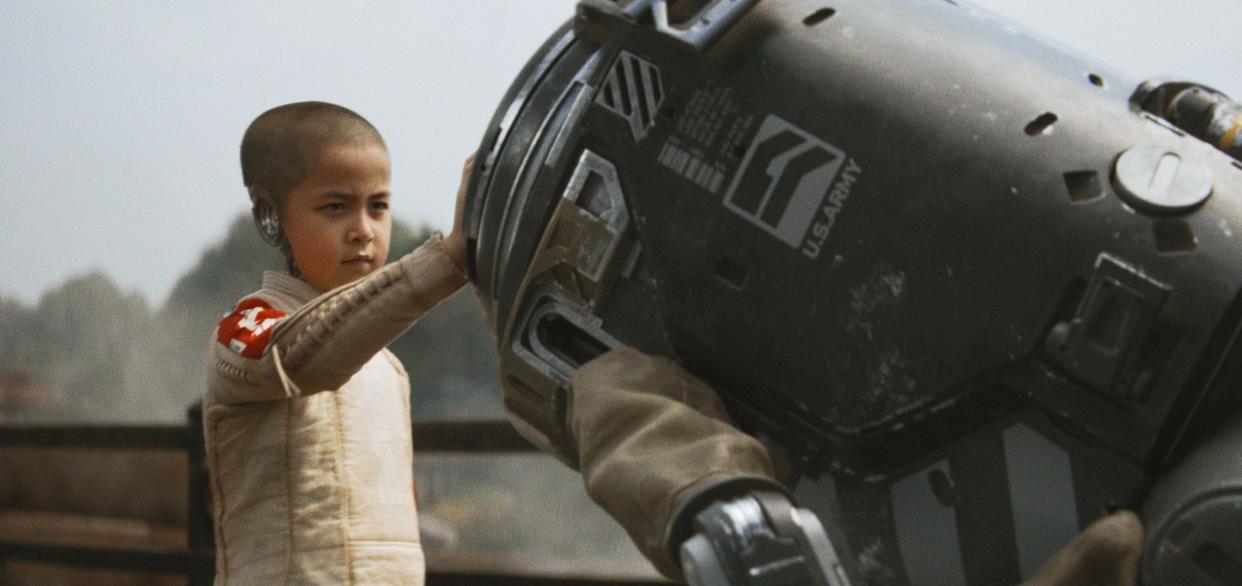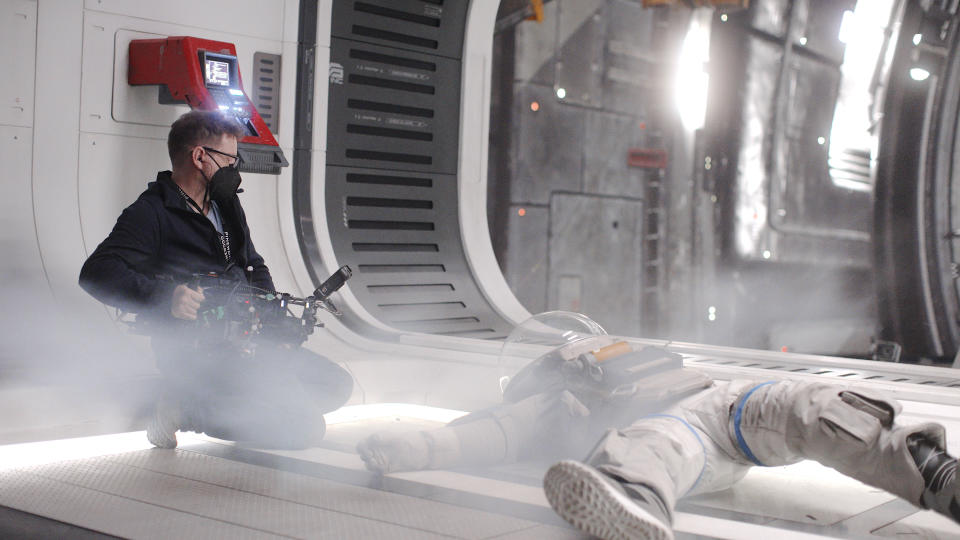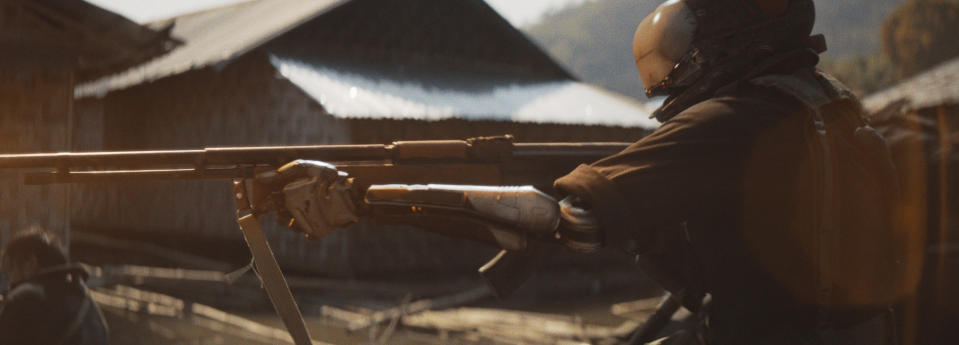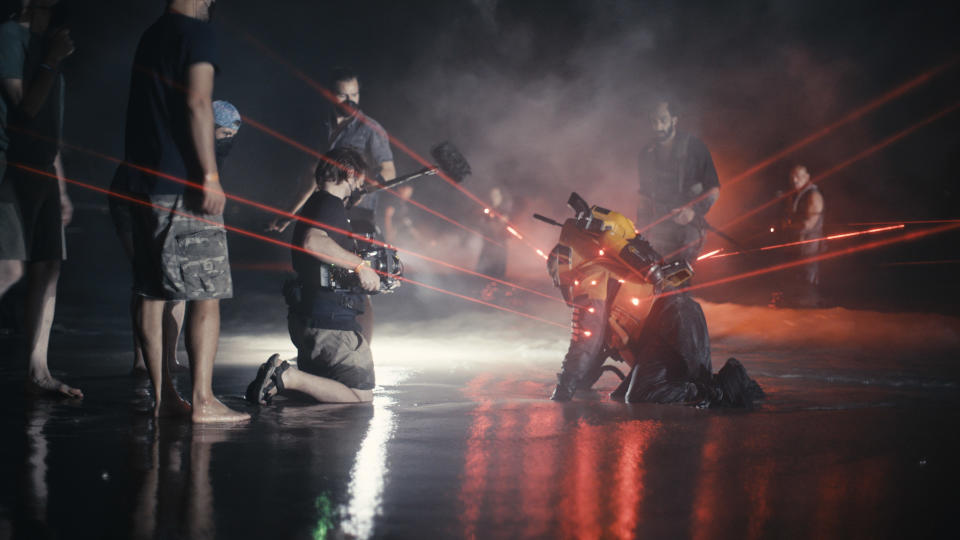With ‘The Creator,’ Director Gareth Edwards Revolutionized His Indie Sensibility on a Blockbuster Scale

- Oops!Something went wrong.Please try again later.
- Oops!Something went wrong.Please try again later.
- Oops!Something went wrong.Please try again later.
Gareth Edwards knew there was something wrong after making “Rogue One” in 2016. After establishing a personal, guerilla filmmaking style on his low-budget sci-fi debut “Monsters” (2010) and then jumping straight into the “Godzilla” and “Star Wars” franchises, the director realized that he had lost his way. But then he found his creative voice on “The Creator” by combining the best of his previous films. In revolutionary fashion, Edwards made his $80 million sci-fi thriller about a future war between humanity and AI look like a $200 million blockbuster.
“When I got to do my first film, I think we had about $250 grand, and it was very creatively liberating,” Edwards told IndieWire. “But then I got dangled this carrot to do ‘Godzilla,’ and it was like going straight to the Super Bowl. I had to do it. And what was fascinating to me is that everything that was really easy to do on a low-budget film became really hard on a big-budget film and vice versa. You couldn’t just move and travel 300 meters and film over there because you had to move, like, 15 trucks and things like this. But then on the low end, doing this massive set piece with crazy spectacle and lots of CGI was never possible.”
More from IndieWire
Paramount Puts All 97 Minutes of 'Mean Girls' on TikTok in 23 Parts
Gregg Araki's Sexy and Psychedelic Gen X Classic 'Nowhere' Is Now Uncut in 4K - Watch the Trailer
The key was finding that sweet spot between these two worlds. This was something that he couldn’t quite accomplish on “Rogue One” by shooting cinéma vérité-style in real locations (with Tony Gilroy doing partial reshoots and rewriting additional scenes with input from Edwards).
“But it felt like the key wasn’t just having a mid-budget because then you end up in the problem of it’s neither a blockbuster nor a creative, artistic, indie film,” Edwards continued. “And so you’ve got this amount of money to spend, and what normally happens is you take 90 percent and spend that shooting the movie, and then having a 10 percent safety net if something should go wrong. And so our goal was to shoot [‘The Creator’] with the 10 percent, and then have 90 percent as our safety net to get Industrial Light & Magic and [composer] Hans Zimmer and the production design of James Clyne and everything else in post to create the scope and scale. In the end, it wasn’t as simple as that divide, but that was the basic premise.”
Edwards calls “The Creator” a cross between “Blade Runner” and “Apocalypse Now”: a film about overcoming xenophobia and questioning if AI is real (“More Human Than Human”). It involves a hardened ex-special forces agent, Joshua (John David Washington), who regains his humanity after meeting the target he’s supposed to kill in New Asia: Alphie (Madeleine Yuna Voyles), a powerful AI simulant that resembles a 6-year-old girl.

It began on a road trip to Iowa, with Edwards and his girlfriend going to visit her parents. He was struck by the image of a factory with a Japanese symbol in a tall field of grass. His imagination sparked and he thought of a robot factory. By the time they reached Iowa, he had the story worked out (it was first called “True Love”), which had never happened so quickly.
Edwards adopted the reverse engineering approach from “Monsters,” realizing his world from scratch. He shot everything first, serving as the primary camera operator, with a small crew and natural light in 80 locations throughout Southeast Asia. The sci-fi design was ’80s Walkman meets Game Boy. This guerilla-style was much more controlled and efficient, without mocap or blue/green screen. However, the StageCraft Volume at Pinewood Studios in London, where sets were built on the stages, was used solely for two critical scenes in the third act aboard NOMAD, the orbital space defense station.
“We wanted to shoot in real countries, in real locations, with real people,” he added. This allowed for a few happy scouting accidents: Edwards found a particle accelerator lab in Thailand for an action sequence that he was only able to use because he directed “Rogue One.” (He gladly put the nuclear physicists in the film at their request.) He also found a wooden trestle bridge in Thailand for a crucial set piece after having his heart set on shooting it in Cambodia. This became the film’s “Bridge on the River Kwai” moment.
“Then once the film was edited together,” Edwards continued, “that was when I would sit down with the [VFX] designers and paint over the shots to create the science fiction world on top. It was the total opposite of how you normally do this.”
Edwards, who started as a VFX artist, collaborated closely after the shoot with production designer Clyne on the look of the AI characters: the simulants that resemble humans, such as Alphie and Ken Watanabe’s soldier, Harun, and the ’80s-inspired robot army, with different-shaped heads. The simulants were the most creative, with the face mask, circular-shaped mech on the side, and negative space through the neck and skull. ILM (production supervised by Jay Cooper in collaboration with onset supervisor Andrew Roberts) played a role in tailoring the design and digitally applying the animation over the simulant faces. They played a similar role with the robot army (who wore human costumes made by Weta Workshop), replacing their heads, hands, and arms. But the actors’ performances remained intact.

“What we did was we set up in Photoshop a completely mech under a skull, and throats and everything, like a robot, and then had the actor as a layer over the top,” Edwards said. “I just tried a million different ways of painting things out and followed the forms of the head. You can’t just do anything because it feels strange. You have to kind of flow with the natural lines that are in the skull, and, obviously, if you’re removing the ear, a circle is a real obvious thing to do. And I wanted there to be a hole all the way through the skull because I didn’t want the audience thinking this was prosthetics. We arrived at that design at the very last minute and ILM, working backwards, had a cut-off point where we needed to have the model locked off.”
The other key innovation was using the lightweight Sony FX3 pro-use camera with Atlas Mercury and Kowa Cine Prominar anamorphic lenses and an aspect ratio of 2.76: 1. This was a first for a film of this magnitude, providing intimacy and naturalism, and the ability to shoot 30-minute scenes without a cut and move anywhere at 360 degrees. Cinematographer Greig Fraser (“Rogue One”) set up multiple configurations before departing for “Dune: Part Two,” and DP Oren Soffer monitored lighting remotely (since this was during COVID) and operated a camera.
“There are a few things about it that are unique,” the director explained. “One is obviously the form factor: It’s tiny and really lightweight, and it’s essentially 4K, so that’s amazing. But the other thing was it had a base ISO of 12800, and so that meant we could shoot in moonlight. And so you have this very sensitive camera and you don’t need the giant lights anymore, which in terms of the guerilla way of filming, allowed us to use these LED tubes to light scenes. It was very organic and liberating and I would never make another film any other way.”
There was such flexibility that they were able to totally improvise an early scene between Joshua and his pregnant girlfriend Maya (Gemma Chan) before his cover is blown. “Chris Weitz wrote a really great, profound scene with the two of them in bed talking and I filmed hours of takes,” Edwards said. “And I just felt that it didn’t feel like a real couple. And so I just went, ‘Fuck it, forget everything and just have fun, mess with each other.’ We did that [affectionate mocking] for about 45 minutes and I didn’t say a word. Some of it was invented in post and we compressed the conversation.”
When it came to working with the inexperienced Voyles as Alphie, however, the director took no credit — it was like pushing a magic button and watching her deliver the proper emotion. “I could just say what Alphie was feeling and that was it,” said Edwards. “I would jokingly turn to the rest of the crew and ask why they couldn’t all be like that.”

Fortunately, Edwards had one of the great editors to work with: Hank Corwin (“The Big Short”), the master of chaotic cutting (“Dune” Oscar winner Joe Walker did the first assembly before departing for the sequel). “Hank’s incredibly left field from everybody else, and it was just incredible to see how his mind works,” added Edwards. “What was important to me was that it was a combination of classical blockbuster filmmaking with this artistic, dreamscape-y approach.
“And you have to be willing to totally smash the film to pieces and then reconstruct it, smash it again, and reconstruct it. And Hank will smash something to pieces more than anyone I’ve ever met. Normally, I’m the person dragging everyone off the cliff going, ‘Come on, we’ve got to go further.’ Hank lives up at the bottom of the cliff.”
Best of IndieWire
Where to Watch This Week's New Movies, from 'The Creator' to 'Fair Play'
The Best Thrillers Streaming on Netflix in October, from 'Fair Play' to 'Emily the Criminal'
Sign up for Indiewire's Newsletter. For the latest news, follow us on Facebook, Twitter, and Instagram.

